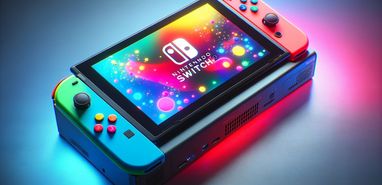
As part of Nintendo’s recent Corporate Management Strategy Briefing, president Shuntaro Furukawa officially confirmed that the upcoming Nintendo Switch 2 will support backward compatibility, allowing players to enjoy their existing library of Switch games on the new console. Rumors had circulated about this feature for quite some time, and even Nintendo of America’s president hinted at it nearly a year ago. Now, with official confirmation, fans are thrilled by this anticipated feature.
Players won’t just be able to play their favorite Switch games; they’ll also have access to a wide range of upcoming titles designed for the Nintendo Switch platform. Nintendo has hinted that more details about the Switch 2’s backward compatibility will be released at a later date, with the Japanese gaming giant aiming to launch the new console within the current fiscal year, which runs until March 2025.
The company’s recent financial report revealed some challenges, as Nintendo adjusted its annual sales forecast. However, Furukawa remains optimistic, noting that the Switch continues to outperform previous Nintendo systems at a comparable stage in its lifecycle.
Why the Nintendo Switch Has Thrived
In his presentation, Furukawa delved into the factors behind the Switch’s success, attributing the console’s strong performance to not only an impressive lineup of games but also four strategic shifts: combining the handheld and home console models into one; strengthening consumer engagement; deepening partnerships with game developers; and expanding regionally into emerging markets.
According to Furukawa-san, the merging of handheld and home console experiences has been a game-changer for Nintendo. Prior to the Switch, the company offered two types of consoles: home consoles and portable handheld systems, each with its own selection of games. The Switch brought these together, creating a unified platform where popular series from both types could coexist.
Streamlined Development for More Consistent Game Releases
The decision to merge these platforms allowed Nintendo to consolidate its development teams, enabling them to focus on a single platform. This shift has led to a steady stream of game releases without significant delays. The Nintendo Switch introduced a “portable home console” concept, embraced by players worldwide. This versatile design appeals to both new users and loyal Nintendo fans who are purchasing additional Switch units for their collections or upgrading to newer versions. Notably, the trend has shifted from a single console per household to a more personalized approach, with multiple units in each family.
Although initially launched as a home console, the Switch’s sales exhibit the strengths of both handheld and home systems, reinforcing its place in gaming history.
Nintendo Switch 2 as the Next Evolution
Looking ahead, Nintendo intends to continue this successful model with the Switch 2, a hybrid console that will offer both handheld and home gaming experiences. Unlike some past innovations, like the Wiimote or Wii U Gamepad, which were novel but short-lived, the Switch’s hybrid nature aligns with the growing consumer trend of on-the-go gaming. It appears that after several generations of experimentation, Nintendo has found a stable, forward-looking path.
Furukawa concluded by noting that the Switch platform’s success demonstrates Nintendo’s ability to adapt to changing consumer habits. The Switch 2 aims to build on this legacy, continuing as a platform that caters to both casual and dedicated gamers, whether at home or on the move.








By Andrej Kovacevic
Updated on 9th March 2025